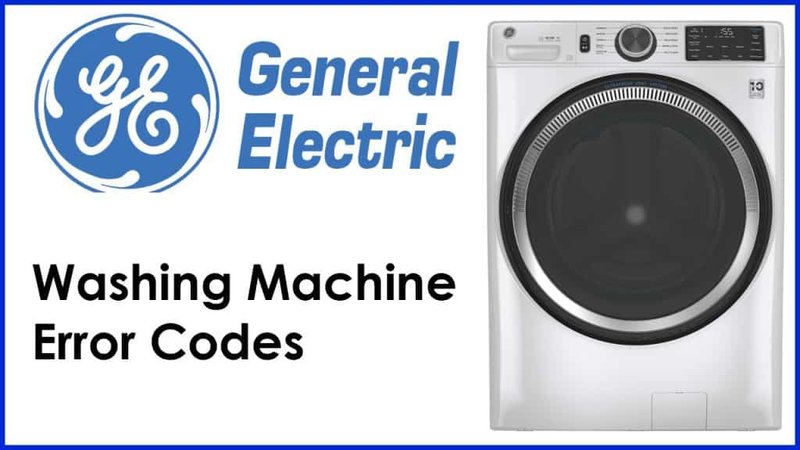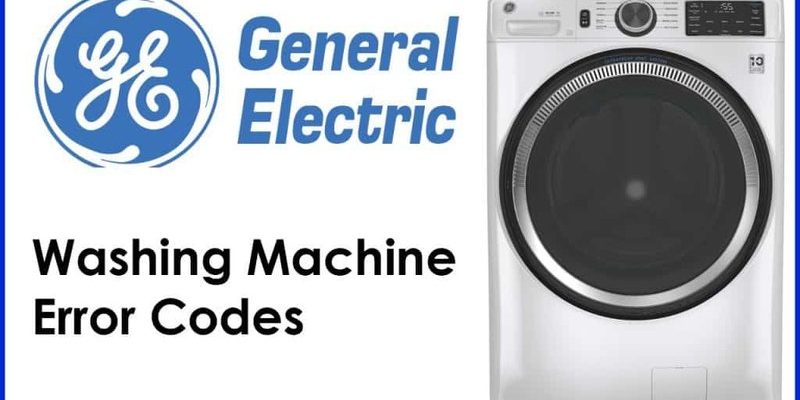
The “F1” error code on a GE washing machine can leave many of us scratching our heads. It’s a bit like your car suddenly displaying a light on the dashboard—you know it means something’s up, but you’re not sure what exactly. The F1 code typically indicates an issue with the machine’s control system, which might be a minor glitch or a sign of a part needing some attention. But before you start worrying about the safety of your machine (and your laundry), let’s delve into what this code really signifies and how it affects your machine’s operation.
Understanding the F1 Error Code on GE Washing Machines
When your GE washing machine flashes the F1 error code, it’s a signal from the machine’s brain—the control board—telling you that something’s amiss. Think of the control board as the machine’s command center, managing all the operations from water intake to spinning. The F1 code often means there’s a miscommunication or a malfunction in this central system. It’s akin to a traffic jam in your machine, where signals aren’t getting through the way they’re supposed to.
You might be wondering, why does this happen? Well, like any smart device, washing machines can run into technical hiccups. Over time, wear and tear, slight electrical fluctuations, or even software glitches can trip the F1 error. In some cases, the machine might sort itself out after a simple reset, which can be as easy as turning it off and on again. However, if the error persists, it might require a more detailed look to pinpoint the exact issue.
Now, you might ask, can I still use the machine? In many cases, yes, but with caution. If the machine is still operating normally otherwise—meaning it fills, agitates, drains, and spins—it’s often safe to continue using it for the short term. However, ignoring the error long-term could lead to more significant issues or even potential damage. So, it’s wise to address it sooner rather than later.
Steps to Diagnose and Fix the F1 Error
Alright, so your machine is acting up, but where do you begin? First, try a simple reset. Unplug the washing machine for about five minutes, then plug it back in. This can sometimes clear minor glitches, much like rebooting a computer. If the F1 error vanishes and doesn’t return after a few cycles, it was likely just a temporary blip.
If the reset doesn’t do the trick, the next step is to consult the machine’s manual. Often, the manual provides specific guidance for troubleshooting error codes. If you’ve misplaced it, don’t worry—most GE manuals are available online for easy reference. Look for sections related to the F1 code, as they might suggest specific parts to check, like the control board connections or wiring harness.
However, if these steps don’t resolve the issue, it might be time to call in a professional technician. They can open up the machine and inspect it for more complex problems such as a failing control board or faulty sensors. While this might be an extra cost, it’s worth it to ensure the machine is safe and reliable for future use.
Preventative Measures and Next Steps
So, how do you prevent the F1 error from happening again? Regular maintenance is key. Just like you’d take your car for regular check-ups, your washing machine needs a little TLC now and then. Keep the machine clean, avoid overloading it, and make sure it’s balanced on the floor. These little things can go a long way toward keeping error codes at bay.
Moreover, consider investing in a good surge protector for your washing machine. Electrical spikes are a common cause of control board errors, much like how a power surge can fry your computer. This small investment can help protect your machine’s sensitive parts and save you from potential headaches.
In conclusion, while the F1 error code can be a nuisance, it doesn’t spell doom for your GE washing machine. With a little patience and the right approach, you can diagnose the issue, address it effectively, and carry on with your laundry tasks knowing your machine is in good shape. Remember, when in doubt, reaching out to a professional is always a secure option to ensure everything is safe and sound.
